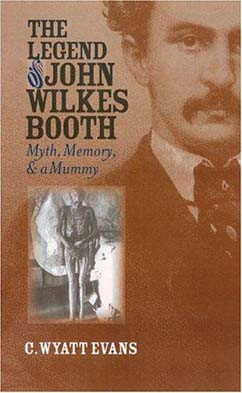
|
|
Vol. LXV, No. 19
|
Wednesday, May 18, 2011
|
 |
 |
Most of the assumptions we have about bin Laden … are dead wrong. He affords us no excuse to deceive ourselves.—Michael Scheuer, from Osama bin Laden
He will never be captured. He’s not Saddam Hussein. He’s Osama. Osama loves death.—quoted in Peter L. Bergen’s The Osama bin Laden I Know
The day after the news of Osama bin Laden’s death, a friend sent me a translated excerpt from a Spanish website (elpais.com internacianal) contending that “the U.S. worships a strange tale of horror, obsession, purity, vengeance and catharsis written by Herman Melville in 1851.” Enric Gonzáles goes on to suggest that “the white whale was transformed into a tall, soft-spoken man” on September 11. As bin Laden became “the cruel and elusive monster,” Americans “were put in the shoes of Captain Ahab: there was no other purpose than revenge.” It was “a moral issue with absolutely no possibility of nuance,” a story that with bin Laden “took on a dark mystique.” Now, “as in Moby-Dick, the end of the ‘monster’ provokes a certain bitter stupor. As if waking from a nightmare and finding that the nightmare is still there.”
D.H. Lawrence would love it. He was celebrating America’s “dark mystique” 75 years before bin Laden commandeered the 9/11 attacks, which, as it happens, took place 150 years almost to the day, September 10, 1851, on which Melville sent his publisher the completed manuscript of Moby-Dick. The analogy can be turned around if you agree that bin Laden has as much in common with the dark, driven captain of the Pequod as he does with the deadly force of nature Ahab was pursuing. Osama sent his crew on a suicide mission that had astonishing consequences while Captain Ahab swept his men to their deaths in a suicidal quest for vengeance.
Viewed in terms of T.S. Eliot’s doctrinaire reading of Hamlet as flawed because the language and emotion Shakespeare invested in it was in excess of the dramatic situation, bin Laden had orchestrated an abomination that exceeded not only its object but his own conception of the goal. As recounted in Jonathan Randal’s Osama: The Making of a Terrorist (Knopf 2004), the video found by American forces in Afghanistan and made public by the Bush administration “a fortnight before Christmas 2001” shows bin Laden not only taking responsibility for the 9/11 attack (“providing chapter and verse for a hanging judge’s fantasy”), but admitting that while “his engineering training had helped him calculate the number of likely deaths from the explosive impact of a nearly fully fueled airliner on the twin towers’ metal structure,” he was surprised when “they collapsed completely.” All he’d “hoped for” had been “the destruction of three or four floors” where the aircraft had hit and “those above the impact.”
Imagery and Overkill
When I searched online for “the face of bin Laden,” thinking to find one of those photographs or caricatures that make him look like a villain from an old Flash Gordon serial, what I saw instead was a gallery of demonic mirages formed by the fire and smoke exploding from the Trade Center inferno. The forces of creative paranoia had infiltrated the monstrous image. It was another form of dramatic overkill, the power of suggestion writ large, a YouTube hallucination fest complete with quotations from The Book of Revelations.
In Moby-Dick’s denouement — the Pequod obliterated, everyone drowned or drowning but Ishmael, the “all-destroying” white whale triumphant — the event once again overwhelms its perpetrator as Hamlet does Shakespeare, Moby-Dick Melville, the fall of the towers bin Laden. The question Lawrence asks at the end of the chapter on Moby Dick in Studies in Classic American Literature (1924) comes with a full measure of Lawrentian rhetoric: “If the Great White Whale sank the ship of the Great White Soul in 1851, what’s been happening ever since?”
Flotsam
What may be the most powerful image to emerge from the raid on Osama bin Laden’s compound is also the most unlikely. Instead of releasing a photograph of the slain mastermind’s face, with its reportedly gruesome head wound, the Obama administration made public the picture that appeared on the front page of Sunday’s New York Times. Like a counterpart to the much-discussed shot of President Obama and his crew focused intently on an unseen screen in the Situation Room as the Navy Seals go into action, there sits Osama wrapped in a blanket with a remote in his hand gazing at a small screen television like a homeless man taking temporary refuge in a welfare hotel.
The photo of bin Laden is only part of the flotsam found floating in the wreckage of the May 2 raid. As reported in last Saturday’s Times, “the trove of information” includes hundreds of thumb drives, DVDs and computer discs, along with 10 computer hard drives, five computers and assorted cell phones” that will engage “small armies of analysts, technical experts, and translators” working “round the clock.” Says the unnamed official being quoted in the story, “It’s all hands on deck.”
The Booth Legend
The possibilities of what some call “conspiranoia” in the aftermath of bin Laden’s death are enormous and have already suggested comparison with the issue that has persisted for a century and a half thanks to those who have refused to accept that John Wilkes Booth was shot dead in a burning barn in Virginia on April 26, 1865. Even now, as bin Laden’s DNA is being cited as proof of his death, descendants of Lincoln’s assassin have reportedly agreed to the exhumation of his brother Edwin’s body for a DNA test that would settle the issue.
According to C. Wyatt Evans’s The Legend of John Wilkes Booth: Myth, Memory & a Mummy (University Press of Kansas 2004), the prevailing conspiracy theory has Booth making his escape while someone else’s body was wrapped in sheets and dumped into the Potomac before a gathering of witnesses. After supposedly heading southwest “under cover of a Confederate cavalry screen,” Booth rested in Kentucky while his broken leg healed, crossed the Mississippi at Catfish Point, hired on as a mule driver, and eventually reached California, where he was reunited with his mother and “secret bride.” Over the next 30 years he was sighted in India, in Ceylon, in China, the South Seas, became an actor in California, a minister in Richmond, Virginia, and a bar-keep in Granbury, Texas. In 1903, a drifter named David E. George committed suicide in Enid, Oklahoma, and lived again in the sideshow circuit as the mummified corpse of John Wilkes Booth.
Ridiculous, right? Totally bizarre. Like something out of Ripley’s Believe It or Not. For instance a 21st century version of the old Wild West Buffalo Bill sideshow at carnivals and state fairs with an Osama bin Laden mummy on display. Absurd, of course. Not gonna happen. But then this is America, where historic secret missions are code-named Geronimo, an Obama tracks down an Osama, and the next big 3-D blockbuster-in-the-making from Hollywood is Abraham Lincoln: Vampire Hunter.